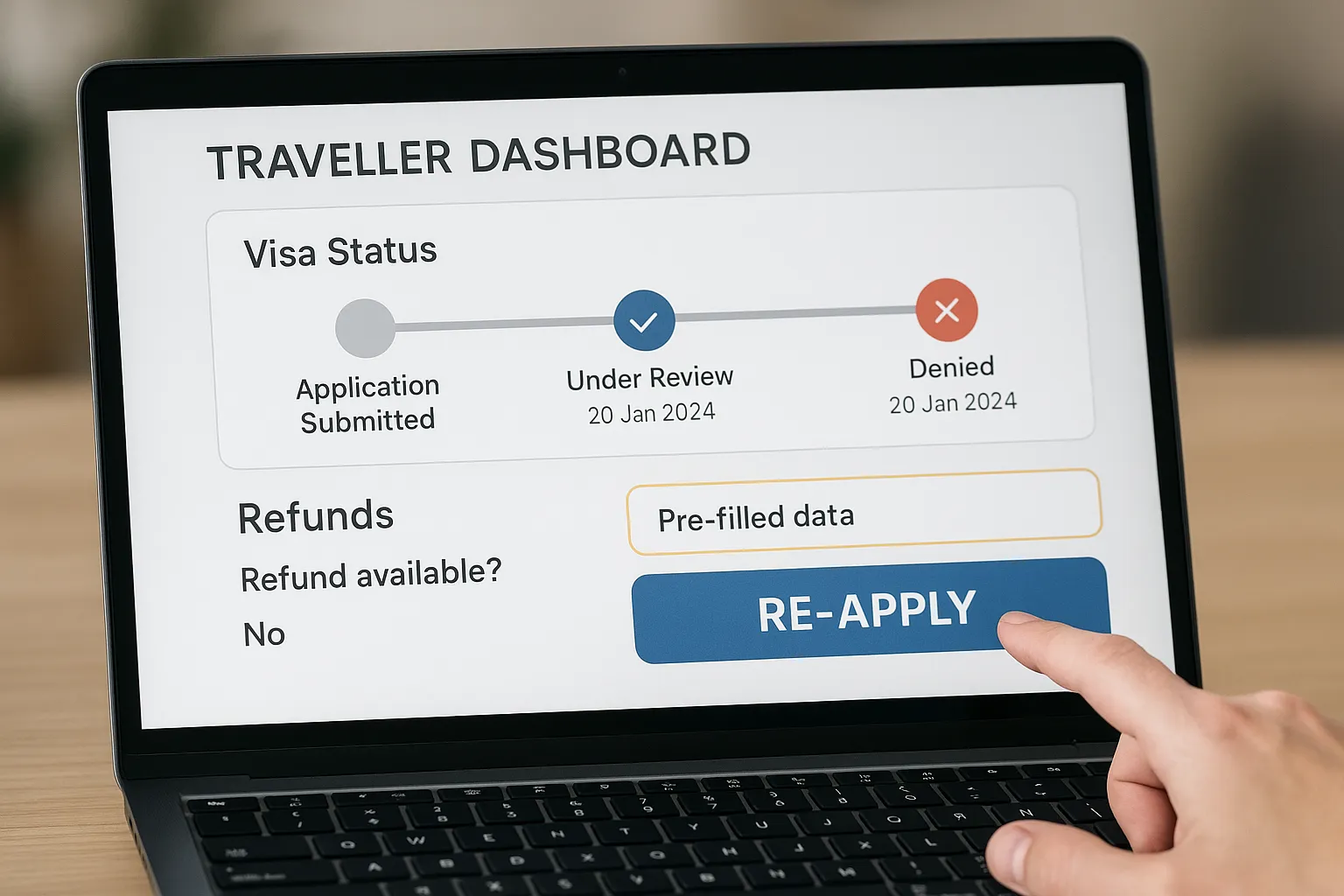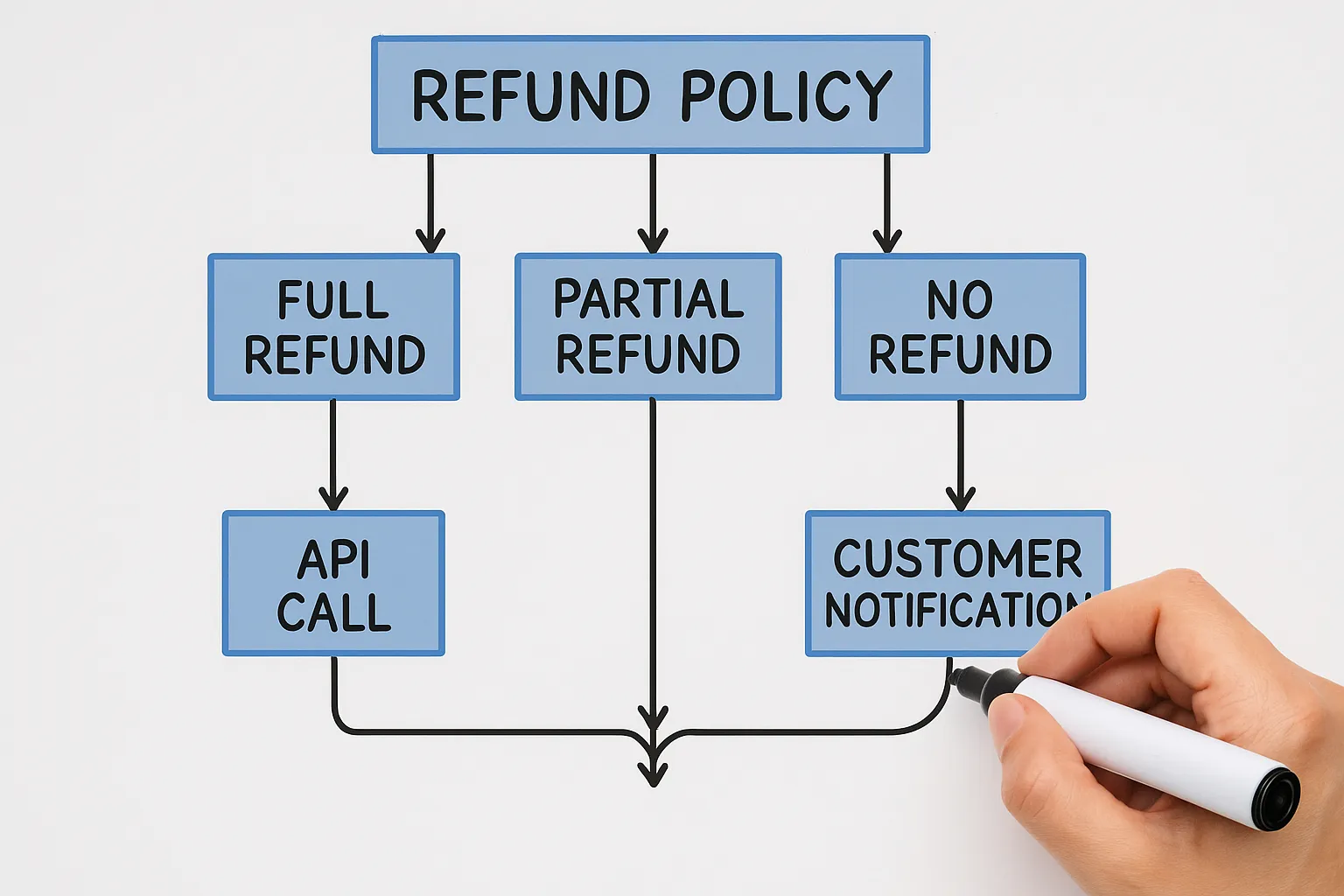Refunds, Cancellations, and Reapplications: Policy Design for Online Visa Processing

Digital visas have become a core ancillary product for airlines, OTAs, cruise lines, and tour operators. Yet once you start selling travel authorisations at scale, thorny questions follow: What happens when a traveller cancels their trip? Who pays when a government refuses a visa after you have collected a fee? How do you encourage a quick re-application without hemorrhaging support time or revenue?
This guide lays out a framework for designing customer-friendly – and commercially sustainable – refund, cancellation, and re-application policies for online visa processing. It draws on SimpleVisa’s analysis of 12.7 million transactions (Jan 2024–Aug 2025) and conversations with dozens of product, finance, and legal teams across the travel sector.
1. Why These Policies Matter More Than You Think
- They protect margin. Chargebacks on digital goods attract higher dispute-win thresholds; a clear refund policy reduces reversal risk.
- They safeguard compliance. Several jurisdictions (e.g., EU Payment Services Directive, California CCPA) require transparent disclosure of refund and data-retention terms for digital services.
- They shape customer loyalty. In SimpleVisa’s July 2025 NPS survey, travellers who received a fast, partial refund + re-application coupon were 2.4× more likely to book another trip within six months.
2. Map the Visa Lifecycle to Refund Triggers
Start by mapping every status that an application can occupy in your platform or vendor API. Typical milestones are: payment captured → "draft" → "submitted" → "under review" → "approved" or "refused". Attach a refund rule to each milestone.
| Visa Status | Typical Elapsed Time | Suggested Refund Rule | Rationale |
|---|---|---|---|
| Draft (form not submitted) | Minutes–hours | 100 % refund, auto-instant | No government costs incurred; encourages quick abandonment recovery |
| Submitted, fee not remitted to gov’t | <24 h | 80–90 % refund | Covers payment gateway & support overhead |
| Under review (fee paid) | 1–5 days | 0–50 % refund, or re-application credit | Government fee usually non-refundable; offer credit to soften blow |
| Approved | – | No refund | Visa delivered as promised |
| Refused | – | 0 % cash refund; free or discounted re-application | Pivot customer toward second attempt, reduce churn |
3. Time-Based vs. Status-Based Refund Windows
Many travel brands default to time-based windows (e.g., “Full refund within 24 hours”). For visas, a status-based approach outperforms because processing speed varies by destination:
- Fast-track destinations (e.g., Bahrain eVisa, Sri Lanka ETA) can reach "approved" in <60 minutes. A 24-hour blanket refund would expose you to near-certain loss.
- Slow-review destinations (e.g., India or Brazil during peak season) may sit in “under review” for four days, so a 24-hour rule feels unfair to travellers.
Hybrid model: full refund until “submitted”, partial after submission, no refund once “under review”.
4. Handling Involuntary Cancellations
Sometimes a traveller never boards because airline schedule changes, medical emergencies, or border closures interfere. Build an involuntary cancellation clause that:
- Mirrors your flight/hotel involuntary policies to keep messaging consistent.
- Allows documentary proof upload (hospital letter, airline email) through the same visa portal to streamline adjudication.
- Credits the traveller with a non-expire re-application voucher rather than cash; redemption rates average 68 % within 12 months in SimpleVisa data.
5. Designing a Friction-Free Re-Application Flow
Denied visas account for 2-4 % of online applications globally, yet 71 % of those travellers still wish to visit the same destination (SimpleVisa research). Turning refusals into re-applications delivers both service recovery and incremental revenue.
Key design principles:
- One-click clone & edit. Pre-fill prior answers while highlighting the fields that triggered refusal codes.
- Dynamic doc checklist. Surface extra documents (e.g., bank statements) required for the second attempt; see our guide “Visa Denied? 9 Recovery Strategies” for refusal-code mapping.
- Smart fees. Waive your service fee for the first re-application but pass through the fresh government fee; attachment rates on second attempts reach 83 %.
- Upsell insurance. Offer a small premium (≈$8) denial-protection add-on that covers the gov’t fee if the second attempt fails – new ARPU lever tested by three OTAs in Q2 2025.

6. Payments, Accounting, and API Hooks
- Delayed capture: Some partners authorise the card at checkout but capture only when the application hits "submitted", avoiding refund fees for instant abandonments.
- Split settlements: Use separate payment intents for the gov’t component and your service markup to simplify partial refunds.
- Webhook-driven triggers: Fire
visa.updatedwebhooks (SimpleVisa schema v3) to your finance system. Whenstatus_transition=submitted→under_review, auto-lock refund eligibility. - Ledger tagging: Add
metadata[refund_tier]to each transaction line to support automated journal entries and audit compliance.
7. Legal & Regulatory Watch-outs
- Consumer protection laws: EU and many US states require digital service merchants to publish refund terms “in a clear, accessible manner prior to purchase”. Embed a concise summary directly beneath the pay button.
- Data-retention rules: If you delete personal data after a full refund, document the policy; authorities may request evidence during GDPR or CCPA audits.
- OFAC / sanctions: Refunds to cards issued in sanctioned regions can violate regulations. Use BIN filtering before initiating a return.
8. Measuring Success
Track these KPIs (also referenced in “5 KPIs to Track After Deploying a Visa Management Platform”):
- Refund rate (% of gross visa revenue) – target <6 % after 90 days.
- Average refund processing time – best-in-class < 40 minutes (automated tiers help).
- Re-application attach rate – healthy range 50–80 % depending on destination mix.
- Chargeback ratio (Visa/Mastercard disputes) – keep <0.6 % to avoid acquirer penalties.
- Net promoter score (visa customers) – watch deltas before vs. after policy rollout.

9. Real-World Snapshot: Mid-Size OTA, Southeast Asia Focus
- Problem: 12 % refund rate on Vietnam/Thailand eVisas due to jumpy travellers and unclear rules.
- Action: Switched to status-based policy, instant refund inside 15 minutes when still “draft”, 85 % refund when “submitted”, no cash refund after “under review” but free re-apply.
- Outcome (90 days):
- Refund rate dropped to 4.1 %
- Chargebacks down 63 %
- Re-application attach rate 78 %
- Net incremental ancillary revenue +US$2.7 per booking
Conclusion: Turn Policy into Competitive Advantage
Clear, automated refund and re-application policies are no longer a back-office hygiene issue; they are a revenue, compliance, and loyalty engine. By mapping refund tiers to application status, leveraging API hooks for instant adjudication, and nudging travellers toward seamless re-applications, travel brands can protect margins while delivering white-glove service.
Ready to see how SimpleVisa’s rules engine and refund webhooks can slot into your booking flow in under a week? Book a 20-minute demo and turn potential losses into repeat business today.